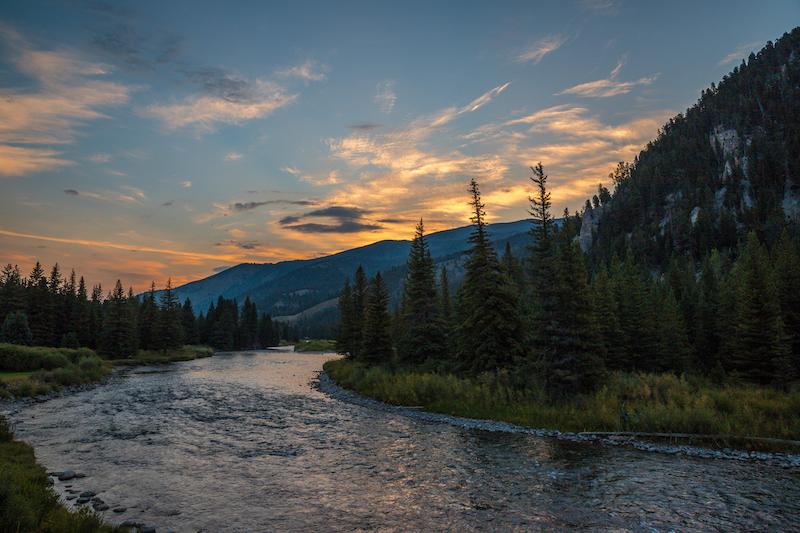
Promoting Native environmental regulation requires confronting historically fraught federal-tribal relationships.
Only five years ago, a grassroots movement led by members of the Standing Rock Sioux Tribe was beginning to organize in opposition to the Dakota Access Pipeline. At the time, the U.S. Army Corps of Engineers was still weighing whether to approve a permit for the pipeline to cross the Missouri River, just upstream from the Standing Rock Reservation. Nobody had yet heard of #NoDAPL.
Although tribal opposition to the pipeline echoed centuries of Indigenous opposition to projects and priorities imposed upon them by outside interests, no one could have predicted the momentous events that would follow—a national movement for a sustainable future, led by Native voices.
The demand for a just recognition of tribal rights—made by the Standing Rock Sioux as well as tribes from across the country—presaged the calls for a national reckoning that have arisen in the half-decade since the start of the #NoDAPL movement.
In just the last year, the killing of George Floyd, the COVID-19 pandemic, and the political and actual attempts to overthrow our nation’s government have only intensified the need for an honest accounting of the myriad ways in which our history and legal system remain divorced from true justice.
Beyond the headline-grabbing events and conflicts, however, the deeper roots of systemic racism and inequity lurk in more nuanced aspects of the federal government’s role on Indian lands.
In 1823, Chief Justice John Marshall concluded in Johnson v. M’Intosh that the United States could lawfully deny the nation’s original inhabitants of their rights to absolute control of their own lands and resources: “However extravagant the pretension of converting the discovery of an inhabited country into conquest may appear,” he wrote, “Indian inhabitants are to be considered merely as occupants . . . incapable of transferring the absolute title to others.”
Since then, federal laws and regulations on the management, use, development, and protection of those lands have proceeded from that conclusion. Although the last 50 years of federal policies have promoted tribal self-determination, the scope of tribal authority to implement tribal conservation, economic, or environmental priorities remains boxed in by federal oversight and standards.
Historic and contemporary limitations on tribal authority are of particular importance as the federal government seeks to transition to a more sustainable balance of conservation and development. Without an honest assessment of the federal-tribal regulatory relationship and the potential impacts of federal policies on tribal decision-making, the United States risks continuing the legacy of federal, not tribal, perspectives governing tribal lands.
Recent revisions to federal leasing and right-of-way regulations have begun to shift that balance toward tribal authority. But challenges remain, especially if Native Nations are to participate meaningfully in, if not lead, a transition to a new, ecologically responsible future.
The balance of federal and tribal authority over energy development and related activity on tribal lands is central to addressing and resolving current environmental challenges. Tribal governments weighing the costs and benefits of policy decisions confront a unique range of issues and concerns. But historically, the federal government has dictated the terms on which tribal energy resources are developed, and federal regulations have established the manner, means, and nature of benefits paid to tribes from those developments.
For example, although the Indian Mineral Leasing Act of 1938 required tribal consent before issuing oil and gas leases, it was federal bureaucrats—not tribal leaders—who decided when and for how much tribal energy resources could be leased to outside interests. Federal agencies were also responsible for—and failed miserably at—enforcing lease terms and accounting for the royalties paid to tribes from those leases.
This federally dominated approach to the development and extraction of fossil fuel resources from tribal lands, premised on outside interests and passive tribal involvement, reigned for much of the 20th century and had disastrous environmental impacts upon many tribes.
As federal policy shifted in the 1970s, tribal leaders began reassessing their options. Rejecting the passive role authorized for them under existing federal law, tribal governments pursued a range of other means to both develop and protect their lands.
In response to the environmental consequences of development, for example, some tribes sought to protect their air and water quality from continuing and future threats. Efforts such as these eventually led to changes in the Clean Air Act and Clean Water Act, which now allow tribes to take responsibility for environmental protection on their lands subject to federal oversight and approval.
Similarly, tribes interested in development opportunities eventually secured passage of the Indian Mineral Development Act, which sought to reduce federal control by empowering tribes to negotiate their own mineral agreements, including a range of deals beyond simply leases. But the Act still required federal review and approval of those agreements. Furthermore, the regulatory scheme applicable to those approvals imported a range of other federal laws and standards, which may or may not align with tribal values or laws.
The Indian Mineral Development Act therefore marked an evolution—not a revolution—of the federal government’s role. Tribal governments interested in building or expanding energy resource-based economies still suffered from the delays and costs of federal involvement.
More recent legislation and regulatory reforms have continued to shift the balance of federal and tribal authorities over tribal lands.
Since 2005, for example, federal law has authorized an avenue for tribes to negotiate with the federal government to assume approval authority for all manner of energy-related agreements. In 2012, the U.S. Congress adopted similar amendments to the law governing surface leases for tribal lands, and tribal governments can now assume authority for approving those agreements as well.
Most recently, the U.S. Department of the Interior significantly revised federal regulations on surface leasing and the granting of rights-of-way across Indian lands. The regulations now make clear that the Department would provide “greater deference to tribes on decisions affecting tribal land.” The revisions to the leasing regulations also included provisions enabling greater flexibility for tribes interested in leasing their lands for solar and wind energy projects.
Tribal leadership drove these changes, each of which marked important and meaningful measures to empower Native Nations and continue the forward progress of rebalancing the federal-tribal relationship.
And yet, tribal priorities may still be marginalized or subsumed within broader federal objectives—as shown by the decision to permit the Dakota Access Pipeline or more recent decisions to delist endangered species, revise National Environmental Policy Act regulations, rollback water quality protections, or pause federal oil and gas leasing.
These notions of federal supremacy and tribal passivity were enabled by decisions dating all the way back to Johnson. Despite recent reforms, those notions remain deeply imbedded within our legal system and continue to underlie many modern analyses even though they have been erased from explicit consideration.
Tribal decision-makers do not share that outdated view of the federal-tribal relationship and, as such, that view is no longer a reliable foundation on which to balance federal and tribal authority, particularly over tribal lands.
Just as they were five years ago on the banks of the Missouri River, tribal leaders—far from being what Chief Justice Marshall dismissed as “mere occupants” upon their lands—are continuing to come together and aim to lead the way toward a more sustainable future.
But translating that leadership into meaningful opportunities for Native Nations to implement sustainable practices on their own lands will depend upon our shared commitment to reckoning with the legacy of federal regulatory control in Indian Country.
This essay is part of a series entitled Native Peoples, Tribal Sovereignty, and Regulation.
"control" - Google News
March 16, 2021 at 11:40AM
https://ift.tt/2Q3rPep
The Legacy of Federal Control in Indian Country - The Regulatory Review
"control" - Google News
https://ift.tt/3bY2j0m
https://ift.tt/2KQD83I
Bagikan Berita Ini
















0 Response to "The Legacy of Federal Control in Indian Country - The Regulatory Review"
Post a Comment